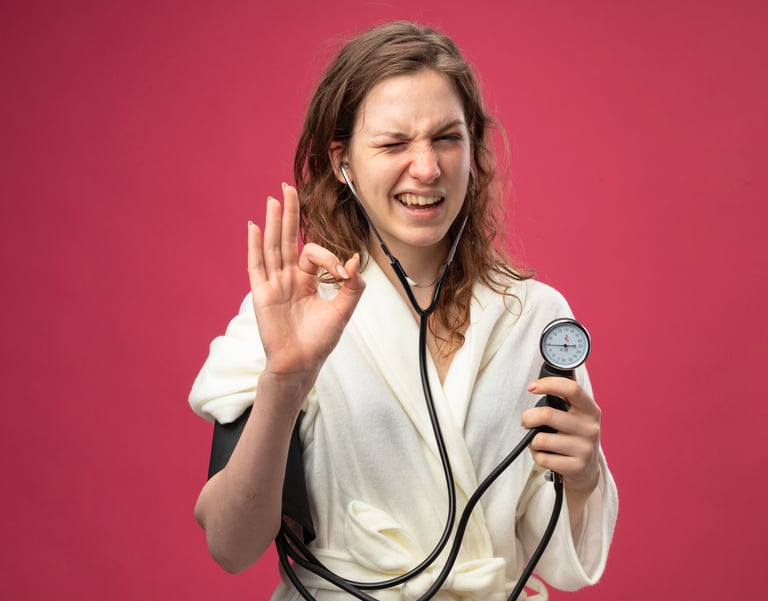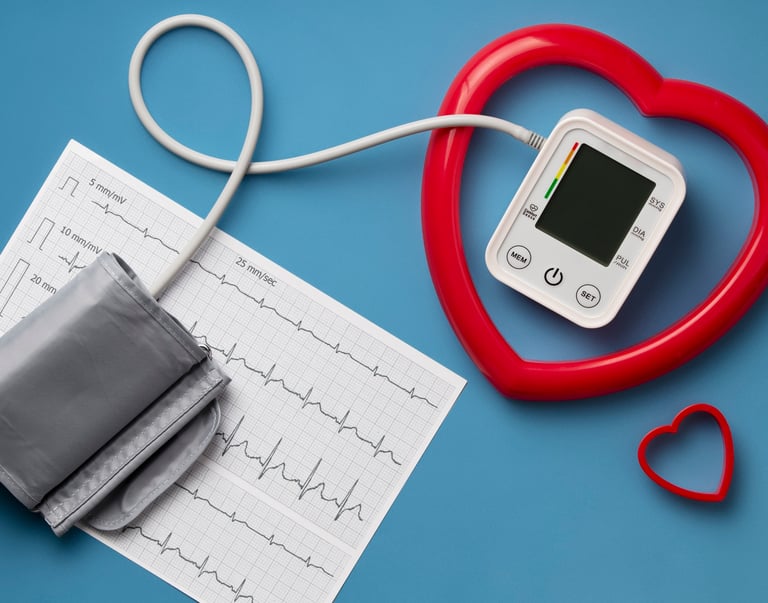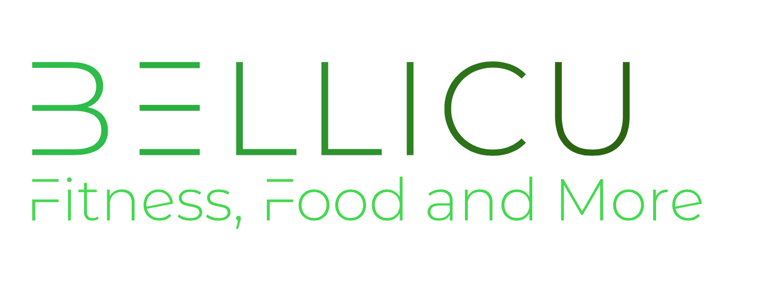Empowering Your Health Journey
We help you monitor your blood pressure effectively, enabling early detection of health issues and informed decision-making for long-term wellness. Take control of your health with our comprehensive guidance.


Your Health Matters
Stay Informed, Stay Healthy
Regular blood pressure monitoring is crucial for maintaining heart, brain, and kidney health. Our resources empower you to track your progress and make informed choices for a healthier future.
Monitoring Your Blood Pressure at Home
A Science-Backed Guide to Managing Heart Health
High blood pressure, or hypertension, is one of the most common yet silent health risks in the world. Often called a “silent killer,” it rarely causes noticeable symptoms until serious damage has occurred—such as heart disease, stroke, or kidney failure. Regularly monitoring your blood pressure at home is a powerful way to stay in control, catch early warning signs, and make informed decisions about your health.
In this article, we’ll explore how blood pressure works, why home monitoring matters, how to do it accurately, and what the numbers truly mean—backed by clinical research and medical guidelines.
What Is Blood Pressure, Exactly?
Blood pressure refers to the force of your blood pushing against the walls of your arteries as your heart pumps. It’s measured in millimeters of mercury (mmHg) and consists of two numbers:
Systolic pressure (top number): the pressure when your heart beats
Diastolic pressure (bottom number): the pressure when your heart rests between beats
For example, a reading of 120/80 mmHg means your systolic pressure is 120 and your diastolic is 80.
Why Home Monitoring Is So Important
Many people experience "white coat hypertension"—elevated blood pressure due to the stress of being in a clinical setting. On the flip side, some people may have "masked hypertension", where blood pressure appears normal at the doctor’s office but is elevated at home.
Home monitoring helps:
Identify these patterns
Provide data for more accurate diagnosis and treatment
Track how lifestyle changes or medications affect your blood pressure over time
The American Heart Association (AHA) recommends home blood pressure monitoring, especially for those diagnosed with or at risk for hypertension.
Choosing the Right Equipment
The gold standard for home use is an automated, upper-arm digital blood pressure monitor that has been clinically validated (look for devices approved by organizations like the AHA or British Hypertension Society). Wrist and finger monitors are generally less reliable due to position sensitivity and smaller arteries.
The American Heart Association (AHA) does not directly approve specific blood pressure monitors. However, they recommend using automatic, cuff-style, upper-arm monitors that have been validated for clinical accuracy.
To find validated devices, you can consult the US Blood Pressure Validated Device Listing (VDL™), developed by the American Medical Association (AMA) in collaboration with the AHA. This resource provides a list of blood pressure measurement devices that have undergone independent validation for clinical accuracy.
Some manufacturers with devices listed on the VDL (validatebp.org) include:
Omron: Known for a range of validated upper-arm blood pressure monitors.
Microlife: Offers several models that have met validation criteria.
A&D Medical: Provides clinically validated devices suitable for home monitoring.
When selecting a blood pressure monitor, ensure it fits your arm correctly, as improper cuff size can lead to inaccurate readings. It's advisable to bring your monitor to your next healthcare appointment to verify its accuracy and ensure proper usage.
By choosing a validated device and using it correctly, you can confidently monitor your blood pressure at home, aiding in effective hypertension management.
Pro Tip: Make sure the cuff size fits your arm properly—an ill-fitting cuff can give inaccurate results.
How to Measure Your Blood Pressure at Home
To get the most accurate readings, follow these steps:
Preparation
Empty your bladder beforehand.
Avoid caffeine, alcohol, and smoking at least 30 minutes prior.
Sit quietly for 5 minutes before taking a reading.
Rest your arm on a flat surface at heart level.
Proper Positioning
Sit with your back supported, feet flat on the floor, and legs uncrossed.
Place the cuff on bare skin, not over clothing.
Ensure the bottom of the cuff is about 2–3 cm above the bend of your elbow.
During the Reading
Don’t talk or move while the cuff inflates.
Take two to three readings, one minute apart, and record all results.
Measure at the same times each day, typically morning and evening.
Understanding Your Readings
Blood pressure readings are given as two numbers:
Systolic (top number) / Diastolic (bottom number), measured in mmHg.


When to Monitor and How Often
For most people: Twice a day—once in the morning before medication or food, and once in the evening.
For those managing hypertension: Your doctor may recommend more frequent checks.
After changes in treatment: Monitor more often to assess response to new medication or lifestyle shifts.
Log your readings in a notebook, app, or device that stores data. Bring your log or device to medical appointments.
Tips for Long-Term Monitoring
Keep a log of your readings with dates and times.
Share your results during doctor visits.
Use your log to identify trends—e.g., higher readings in the morning or after certain foods.
Don’t adjust medications without consulting your healthcare provider.
When to See a Doctor
Regular home monitoring isn’t a replacement for professional care. Seek medical advice if:
Your readings are consistently above 130/80 mmHg.
You experience symptoms like chest pain, shortness of breath, or dizziness.
Your readings fluctuate widely or spike unexpectedly.
The Bottom Line
Home blood pressure monitoring is a simple, yet powerful way to take control of your heart health. By choosing the right equipment, following proper technique, and consistently tracking your readings, you can play an active role in preventing or managing hyperte
Empower Your Health
Monitor your blood pressure to catch early signs and make informed health decisions for wellness.




Health Monitoring
Empowering individuals to manage their blood pressure effectively at home.
Monitoring my blood pressure has truly changed my approach to health management.
Sarah L.
New York
Regularly checking my blood pressure has helped me stay informed and proactive about my health journey.
John D.
Los Angeles
★★★★★
★★★★★
Health Monitoring Services
Empower yourself through blood pressure monitoring for better health decisions and long-term wellness management.
Track Your Progress
Easily log your readings to monitor changes and identify potential health issues early on.


Stay Informed
Receive essential tips on blood pressure management to support your overall health and well-being.
Learn how regular monitoring can help you take charge of your health, reducing risks and improving outcomes.
Control Your Health




